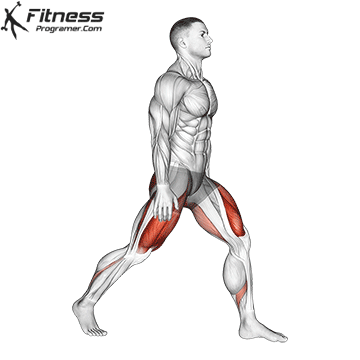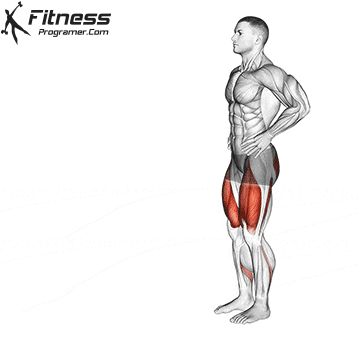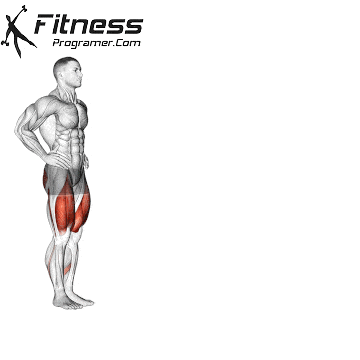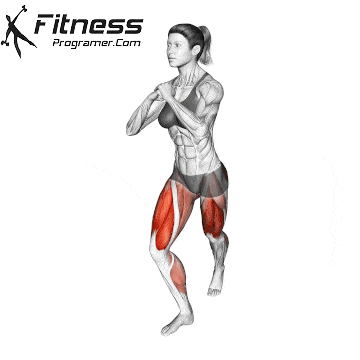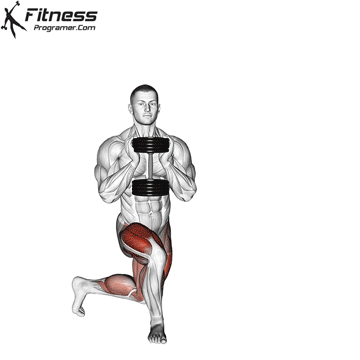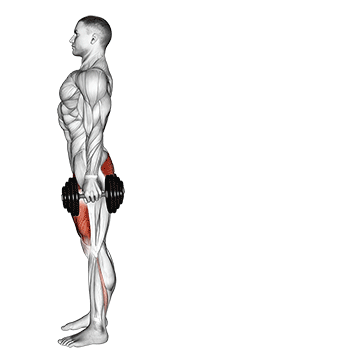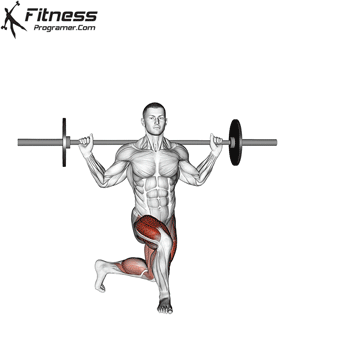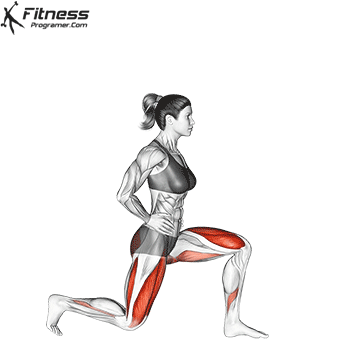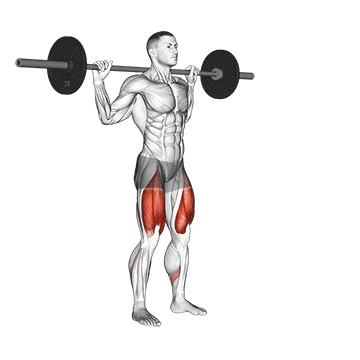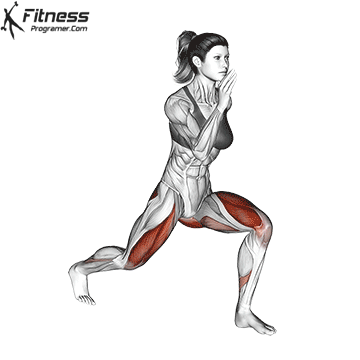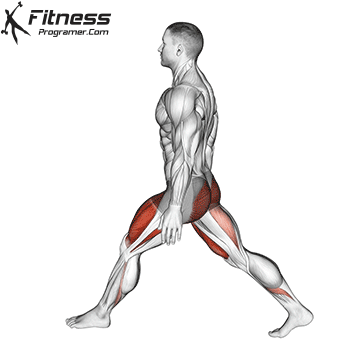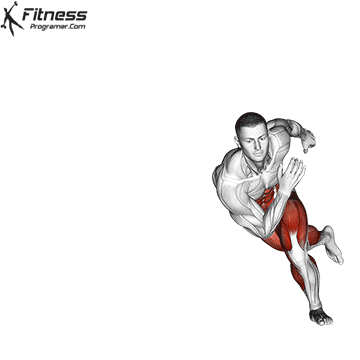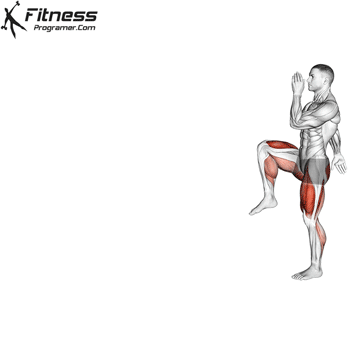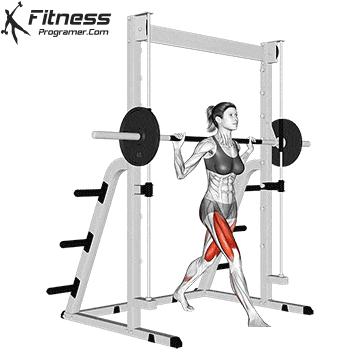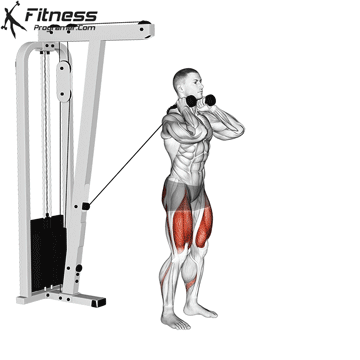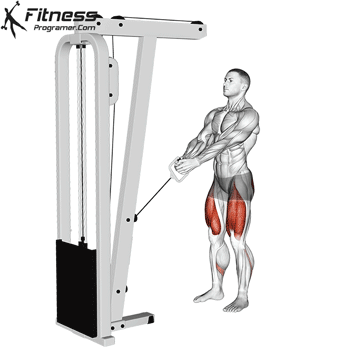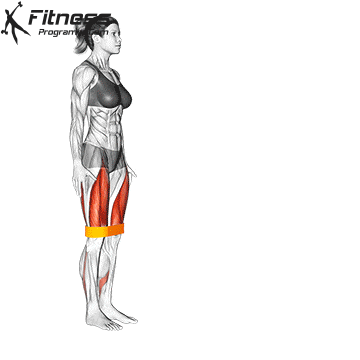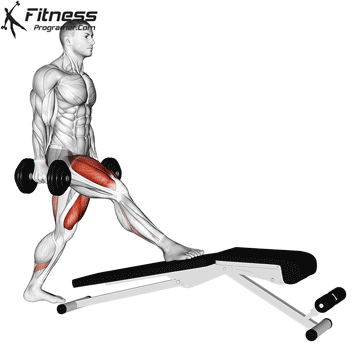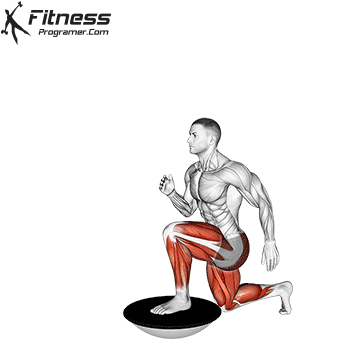Overview
The dumbbell walking lunge is a dynamic lower-body exercise that combines strength, balance, and coordination. By holding a dumbbell in each hand and lunging forward step by step, you activate major muscle groups while enhancing stability and joint mobility. It combines elements of both strength and cardio training, allowing you to get a full-body workout in less time. It is an excellent movement for athletic training, hypertrophy, and functional fitness.
How to perform Dumbbell Walking Lunge
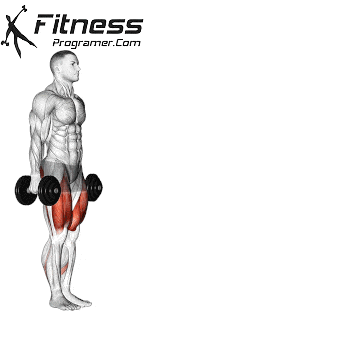
Hold a dumbbell in each hand, arms extended by your sides with palms facing inward.
Stand tall with your feet hip-width apart and engage your core.
Take a big step forward with your right leg, lowering both knees until your back knee hovers just above the ground.
Keep your chest upright and front knee directly above the ankle.
Push through the front heel to rise and bring your back leg forward into the next step.
Continue alternating legs as you walk forward for the desired number of reps or distance.
Tips for Proper Form
Keep your core engaged to maintain balance and stability.
Step wide enough so the front knee does not pass the toes.
Keep your torso upright to avoid forward lean.
Control your pace to ensure proper form and muscle activation.
Use a steady stride and avoid rushing through steps.
Common Mistakes
Letting the knees cave inward, which can strain the joint.
Taking too short a step, placing pressure on the front knee.
Swinging the dumbbells, which disrupts balance and posture.
Leaning forward excessively, shifting emphasis away from the legs.
Allowing the back knee to crash to the ground, increasing injury risk.
Benefits of the Dumbbell Walking Lunge
Enhances unilateral strength: Trains each leg individually to correct muscular imbalances and improve coordination.
Builds glute and quad development: The walking motion heavily activates the glutes, quads, and hamstrings for balanced leg growth.
Improves core stability: Holding dumbbells challenges your core to stabilize your spine throughout each step.
Boosts balance and athleticism: The dynamic nature of walking lunges improves control and athletic movement patterns.
Increases joint mobility: Encourages full range of motion in the hips, knees, and ankles while strengthening them under load.
Supports functional movement: Mimics real-life movement patterns that require strength, balance, and coordination.
Effective for fat loss and conditioning: Involves large muscle groups and sustained effort, raising heart rate and improving cardiovascular endurance.
- Lower Body Hypertrophy: If you’re interested in building muscle size in your lower body, walking lunges can be an effective choice. By progressively increasing the weight and volume of your lunges, you can stimulate muscle growth in your legs and glutes.
- Muscle Endurance: Performing walking lunges for extended distances or repetitions can help improve muscle endurance in your legs, allowing you to endure longer periods of physical activity.
How to Incorporate Into Your Routine
- For Beginners: Perform 2 to 3 sets of 6 to 8 steps per leg using light dumbbells and focusing on control.
- For Hypertrophy: Complete 3 to 4 sets of 10 to 12 steps per leg with moderate weight and controlled movement.
- For Strength: Use heavier dumbbells for 4 sets of 6 to 8 steps per leg, emphasizing stability and range.
- For Functional Training: Add a pause or rotation at the bottom of each lunge to challenge balance and core.
- For Circuit Training: Include 20 to 30 seconds of walking lunges in a lower body or full-body circuit.
- For General Fitness: Use as a leg day staple or conditioning finisher 2 to 3 times per week.
- For Mobility and Control: Use lighter weights and slow, deliberate steps to improve flexibility and movement quality.
Muscles Worked
Here’s a breakdown of the muscles worked during dumbbell walking lunges:
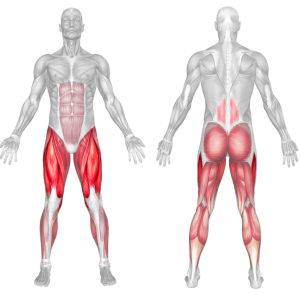
Frequently Asked Questions
Can I do this exercise without dumbbells?
Yes. Bodyweight walking lunges are great for beginners or as part of a warm-up or recovery workout.
Should I alternate legs or do one side at a time?
Walking lunges naturally alternate legs as you step forward. Static forward lunges are better for isolating one leg at a time.
Is this exercise good for knee health?
Yes, if done with proper form. Keep your knee aligned with your ankle and avoid letting it collapse inward.
Can I walk in place if I have limited space?
Absolutely. You can do alternating reverse lunges or forward lunges in place if space is an issue.
Dumbbell Lunge Variations
Adding creative variations to your dumbbell walking lunges can make your workouts more engaging and help target different muscle groups. Remember to maintain proper form and choose weights that align with your fitness level and goals for each variation.

